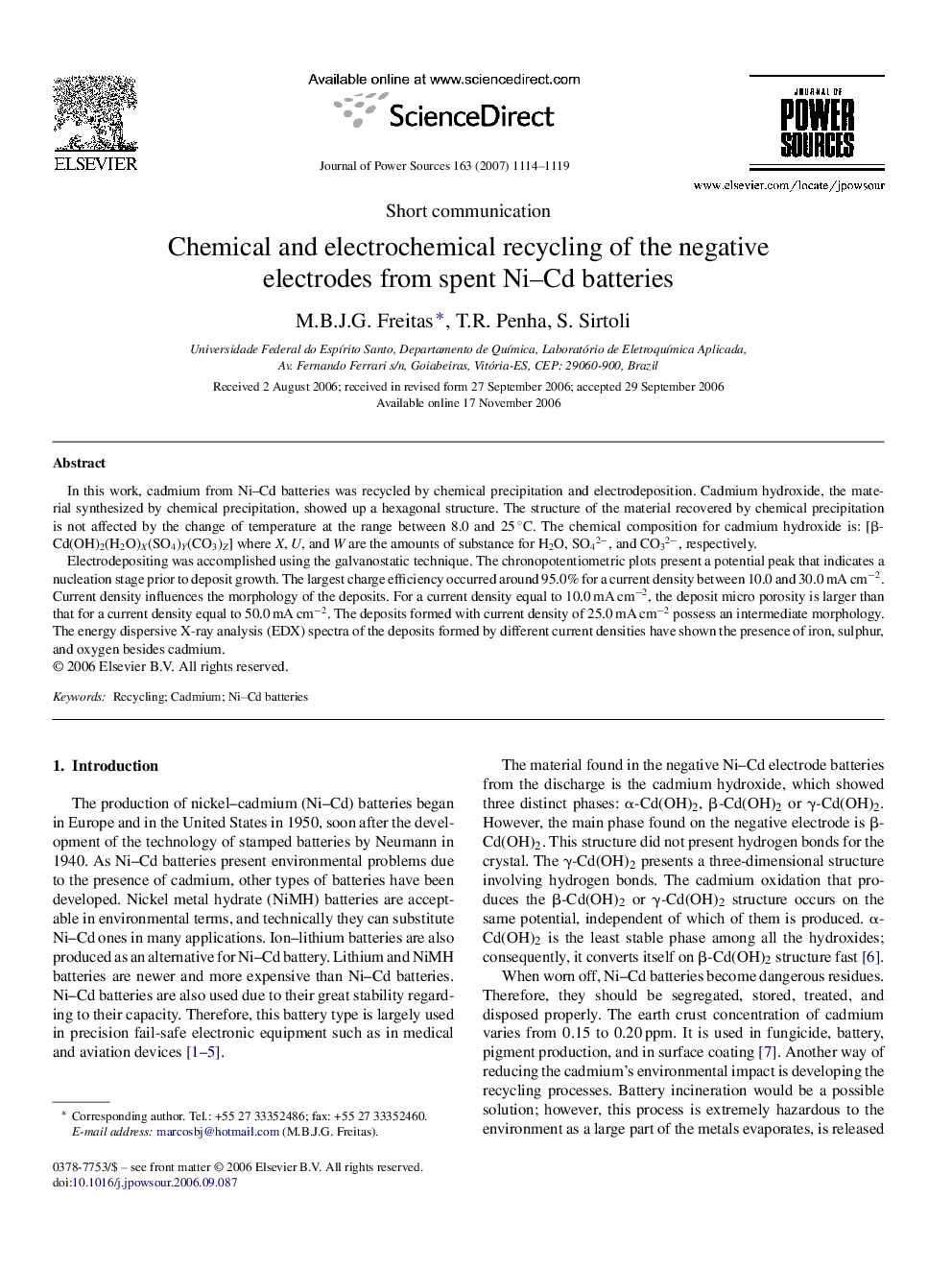| Article ID | Journal | Published Year | Pages | File Type |
|---|---|---|---|---|
| 1286948 | Journal of Power Sources | 2007 | 6 Pages |
In this work, cadmium from Ni–Cd batteries was recycled by chemical precipitation and electrodeposition. Cadmium hydroxide, the material synthesized by chemical precipitation, showed up a hexagonal structure. The structure of the material recovered by chemical precipitation is not affected by the change of temperature at the range between 8.0 and 25 °C. The chemical composition for cadmium hydroxide is: [β-Cd(OH)2(H2O)X(SO4)Y(CO3)Z] where X, U, and W are the amounts of substance for H2O, SO42−, and CO32−, respectively.Electrodepositing was accomplished using the galvanostatic technique. The chronopotentiometric plots present a potential peak that indicates a nucleation stage prior to deposit growth. The largest charge efficiency occurred around 95.0% for a current density between 10.0 and 30.0 mA cm−2. Current density influences the morphology of the deposits. For a current density equal to 10.0 mA cm−2, the deposit micro porosity is larger than that for a current density equal to 50.0 mA cm−2. The deposits formed with current density of 25.0 mA cm−2 possess an intermediate morphology. The energy dispersive X-ray analysis (EDX) spectra of the deposits formed by different current densities have shown the presence of iron, sulphur, and oxygen besides cadmium.
